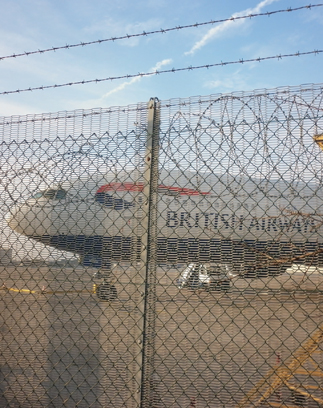To pick up the story of crime at London Airport – the old name for Heathrow in the days when it was the sole airport for the capital – as according to a file in the National Archives, covering around the year 1970.
RVF, Roy Turner, who as a holder of the QPM was a former policeman, was then head of security at the airline BOAC (the British Overseas Airways Corporation, a forerunner of British Airways). He wrote a letter to the Home Office in October 1973, apologising for delay, ‘but we seem to exist from one emergency to another’. Turner did include a report about how BAA’s police and airlines first met about crime in June 1966. Turner admitted: “It is difficult to see any achievement over a period of seven years resulting from these meetings …’.
IATA [the international air transport association] formed a fraud prevention group in 1964, as a sign that theft of property and revenue was a common problem. IATA had a separation sub-committee on protection from hijackings. There was, Turner admitted, a problem of self-interest. BAA’s police did not want the Met to do a crime survey, and BAA itself was sensitive to its image as an international airport; for instance, it did not want to put up posters to warn of theft. In a letter to the Home Office in March 1972, Turner admitted ‘of satisfactorily identifying persons to whom cargo is handed’. That is, collection orders were easily falsified and there were no identity cards or system of photographs and specimen signatures of authorised collectors of freight. All sides, airlines and freight forwarders, agreed on the problem; but not on the cost and difficulty of making an ID system. Although BAA did provide a plastic card with photo, all airlines would have to adopt a procedure that they would not give cargo to a driver without ID. A letter from British Legion – that is, later the guarding contractor Legion Security – told of their photographic equipment installed on the Preston vehicle security park, that is, at Legion’s base. A dual lens camera cost £400 (about the price of a cheap car at the time). An American invention, the Regiscope took a driver’s picture, to put on a document.
A Board of Trade memo in 1971 blamed most of the thefts at Heathrow on airline personnel rather than BAA; that is, the handlers and loaders onto planes, as was raised in the House of Commons. According to the police’s records, Heathrow thefts were far fewer than a county police force’s such as Nottinghamshire’s, but the value of Heathrow’s thefts was far greater. Around 1970, theft of freight fell because airlines were going over to jets with cargo in containers. The next problem to be faced would be theft of an actual container. The Daily Telegraph reported on the Europa seminar’s first day in its November 30, 1971 edition, headlined ‘Stern measures introduced internationally by airport security discouraged hijackers’.
Well might the Home Office grumble amongst itself that Turner was not acting urgently. A letter on 10 Downing Street notepaper dated November 16, 1971 was titled ‘Theft at London Airport’. The prime minister (then Ted Heath) was ‘disturbed’ about the newspaper reports of thefts on a wide scale there. ‘He suspects from cases which have been drawn to his attention in recent years that these reports are well founded.’ The PM asked that if any minister was replying to questions, ‘care should be taken not to minimise concern about what is happening at the airport nor to suggest that we believe that those concerned with running the airport are blameless.’ A comparison might be with football hooliganism at the time, which the game was seeking to avoid blame for. Heathrow like football mattered to politicians because it affected voters, in Heathrow’s case holiday-makers having watches, jewellery or other easily portable and concealable items taken from luggage, or entire bags going missing.
An editorial in the Daily Express of November 16, 1971 demanded answers. The Financial Times on the same day ahead of the Europa seminar noted difficulties in maintaining security at Heathrow – over a wide area, with rapidly moving people; and perhaps 100 airlines at a time there. Douglas Buchanan, having retired from BAA, as security controller, blew the whistle about organised crime and racketeering. Buchanan blamed a shortage of manpower. In an exclusive on November 15, 1971 the Daily Express proposed a ‘Jet squad’, that is on the lines of the Met’s Flying Squad, a specialised group of police working worldwide. Buchanan passed to the newspaper an informant’s description of a ‘heavy mob’ stealing mail bags, and looters from luggage, such as gems and banknotes. Such crime was plainly long-term; the ‘heavy mob’ recruited by watching people in the workplace, and talking about the ‘rotten job’ and seeing responses over months. There was no apparent security in the mail shack; bags might be lying open, and doors were never locked. Buchanan called it a ‘scandalous situation’. As the Express printed, Heathrow was the size of London docks, hinting at similar issues to a port.
Part three: what the inspector saw.
Photo by Mark Rowe: Heathrow perimeter, 2010s.










